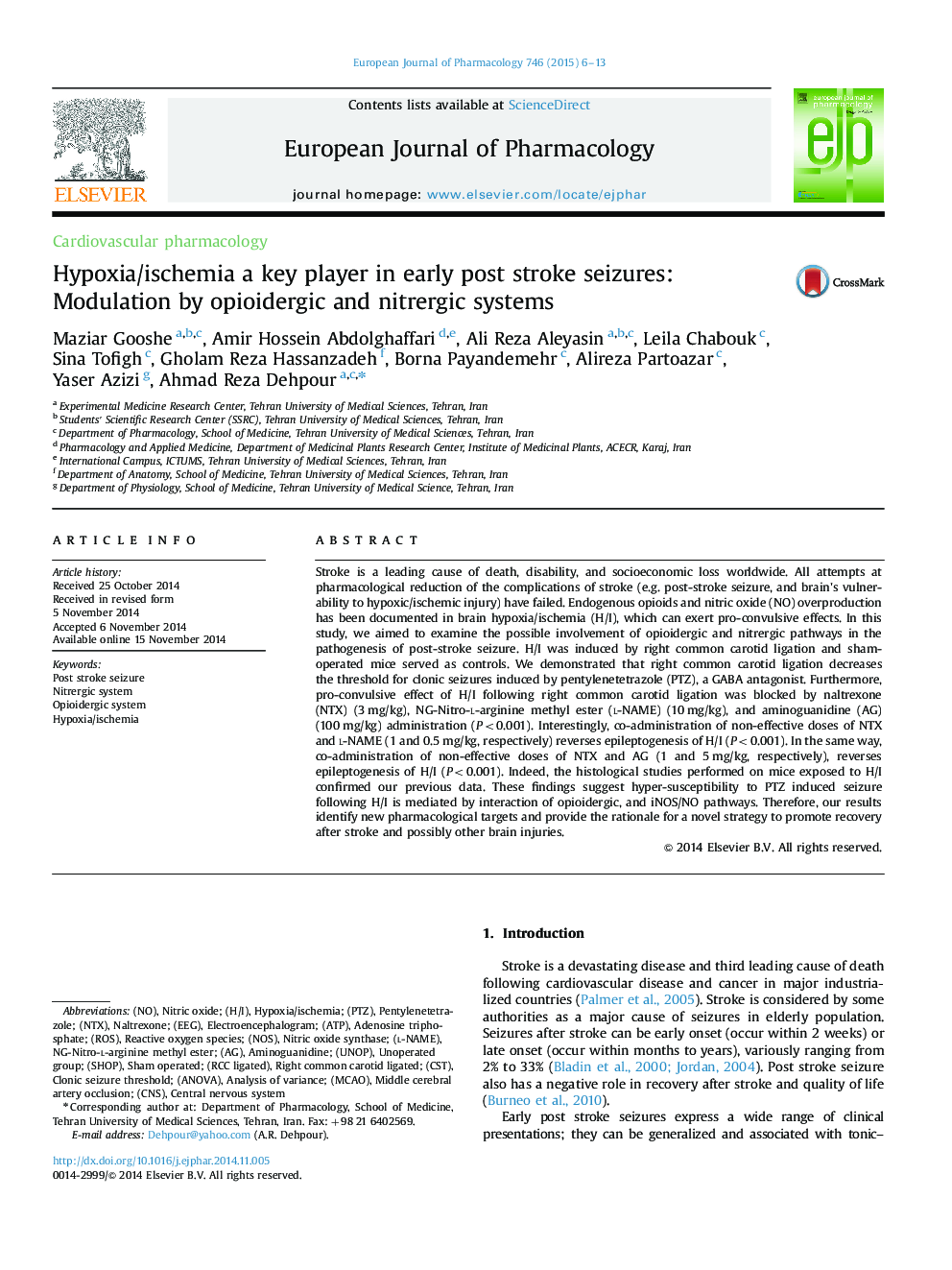| Article ID | Journal | Published Year | Pages | File Type |
|---|---|---|---|---|
| 2531570 | European Journal of Pharmacology | 2015 | 8 Pages |
Stroke is a leading cause of death, disability, and socioeconomic loss worldwide. All attempts at pharmacological reduction of the complications of stroke (e.g. post-stroke seizure, and brain׳s vulnerability to hypoxic/ischemic injury) have failed. Endogenous opioids and nitric oxide (NO) overproduction has been documented in brain hypoxia/ischemia (H/I), which can exert pro-convulsive effects. In this study, we aimed to examine the possible involvement of opioidergic and nitrergic pathways in the pathogenesis of post-stroke seizure. H/I was induced by right common carotid ligation and sham-operated mice served as controls. We demonstrated that right common carotid ligation decreases the threshold for clonic seizures induced by pentylenetetrazole (PTZ), a GABA antagonist. Furthermore, pro-convulsive effect of H/I following right common carotid ligation was blocked by naltrexone (NTX) (3 mg/kg), NG-Nitro-l-arginine methyl ester (l-NAME) (10 mg/kg), and aminoguanidine (AG) (100 mg/kg) administration (P<0.001). Interestingly, co-administration of non-effective doses of NTX and l-NAME (1 and 0.5 mg/kg, respectively) reverses epileptogenesis of H/I (P<0.001). In the same way, co-administration of non-effective doses of NTX and AG (1 and 5 mg/kg, respectively), reverses epileptogenesis of H/I (P<0.001). Indeed, the histological studies performed on mice exposed to H/I confirmed our previous data. These findings suggest hyper-susceptibility to PTZ induced seizure following H/I is mediated by interaction of opioidergic, and iNOS/NO pathways. Therefore, our results identify new pharmacological targets and provide the rationale for a novel strategy to promote recovery after stroke and possibly other brain injuries.
